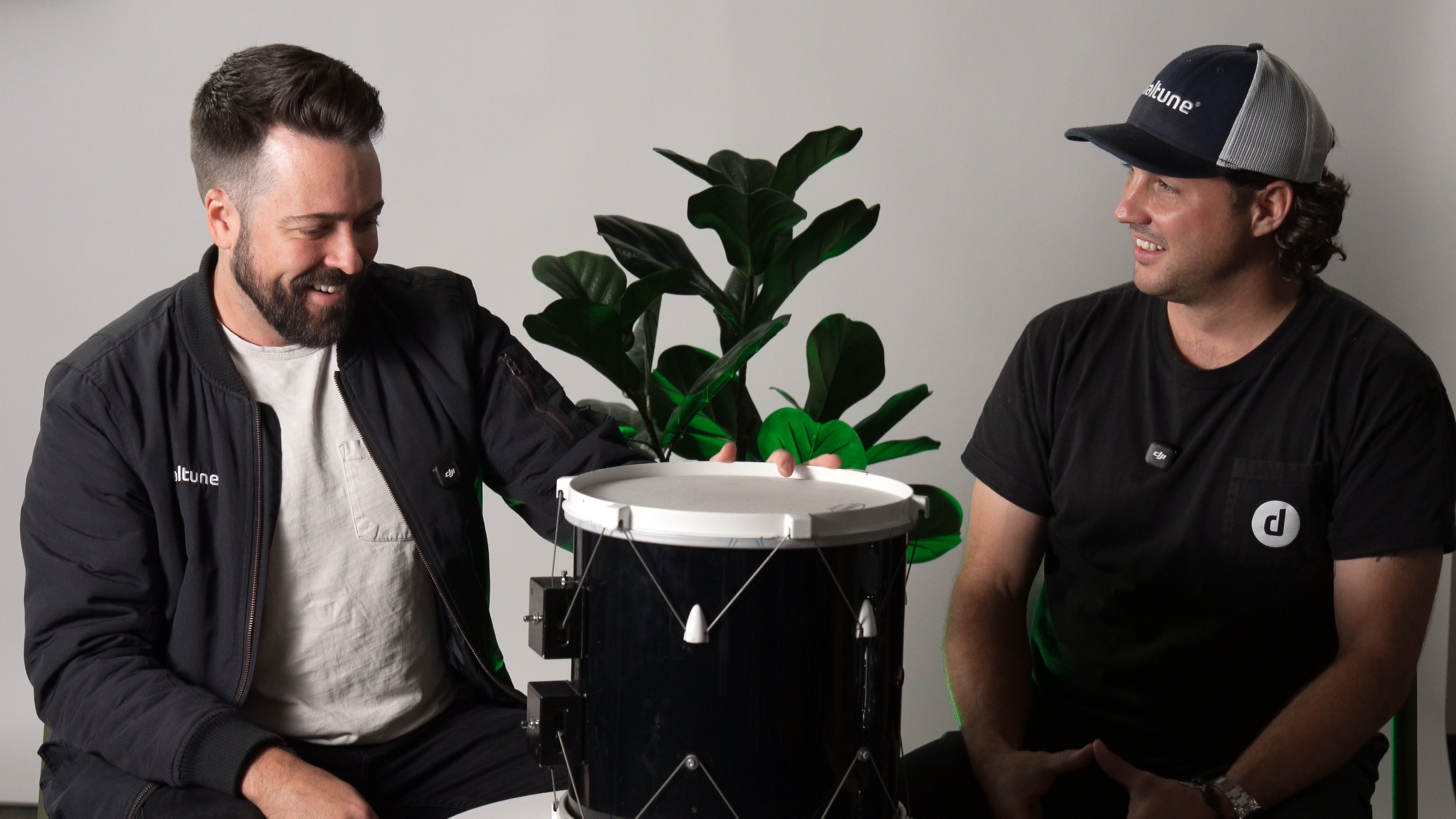Dialtune Origins, Part 2: From Gatekeepers to the Maker Series
Dialtune Origins: Part 1 · Part 2 · Part 3
In Part 2, Alexander Marshman is back in the studio with Bryan Bedson—the inventor behind our system—while Bryan Saftler runs the cameras. This chapter covers the grind between a clever prototype and a production-ready instrument: licensing attempts that went nowhere, a second prototype built in grad school, real feedback at NAMM, and the leap to our first market-ready drums.
V2 in Grad School: Make It Playable, Make It Clear
While finishing grad school, Bryan kept chipping away—filing more patents and building a more convincing prototype with help from an SPU engineering student. The goal was simple: let people experience the idea, not just see sketches. V2 had both heads represented, gearboxes that locked/unlocked, and a drum-key interface to feel familiar.
Core belief from day one: the batter and resonant heads must be tuned independently. That relationship is part of the instrument’s voice—and it had to stay.
Knocks on Big Doors, Crickets Inside
We sent schematics and early patents to a major brand hoping for a license. The response: you can’t submit ideas. Translation—no review, no shot. So we doubled down: build a version people could hear, feel, and judge for themselves.
What We Kept, What We Ditched
V2 taught us a lot. The locking, ratcheting quick-release button seemed smart—until we tried to back off pitch in small steps. It dumped tension too fast and killed control. We moved away from the drum key too; if the mission is simplicity, why add another tool?
Cable Trials: Steel Braided ≠ Studio Friendly
We tested hundreds of cables. Braided steel took a “memory,” kinked at bends, and didn’t spool smoothly. Stiff, noisy, impractical. We kept iterating toward materials and paths that move cleanly and distribute tension consistently.
Learning to Own the Build
Bringing on investment raised the stakes and clarified responsibility. We learned—sometimes the hard way—that not every engineer is a problem-solver, and that trusting our own intuition matters. Collaboration is essential; ownership is non-negotiable.
The Aftermarket Detour
Our early vision was a clip-on system you could bolt to any drum. In practice, there were too many variables—shells, hoops, tolerances—for a consistent player experience. If we can’t guarantee the sound and feel, we don’t ship it. So we pivoted.
NAMM Feedback & the Maker Series
After hundreds of conversations at NAMM, we built the Maker Series—our first production-ready drum. We met the right engineer, simplified around a dial (no more drum key), and introduced the quick-release hoop. That unlocked true “speed to sound”—and 30-second head swaps for real tonal palette changes in a session.
First Manufacturing Push: Costly Lessons
We sourced hardware overseas for the best casting quality/cost mix and hand-assembled drums here—literally in the garage. They sounded great, but the build cost was high, pushing retail to about $1,000. That didn’t fit our mission to make the innovation accessible, so we kept working.
Dialtune Snare: Better Price, Better Quality
With a new manufacturing partner capable of micro-adjustments, we brought costs down and quality up—improved shells, tighter tolerances, more repeatable results. Real-world proof? One of these snares hit the stage with The Wailers and came back signed.
What This Means for Drummers
- Independent head control: Shape feel and tone intentionally—top and bottom, your way.
- Dial simplicity: No tools, fewer steps, faster decisions.
- Quick-release hoops: 30-second head swaps = a bigger color palette in every session.
- Refined manufacturing: Consistent tuning feel and repeatable results, drum to drum.
In Part 3, we share where the system has landed today—and where it’s headed next, together with working players who keep pushing us forward.
Dialtune Origins: Part 1 · Part 2 · Part 3
Credits: Conversation with Alexander Marshman. Camera by Bryan Saftler. Invention and early prototypes by Bryan Bedson.
We build drums. YOU make them matter.



Share:
Founder Story - Dialtune Origins Part 1
Dialtune Origins: The Whole Story in 3 Quick Chapters